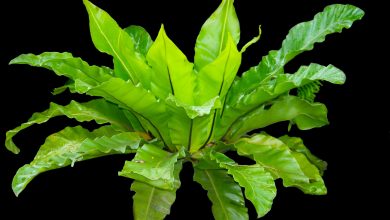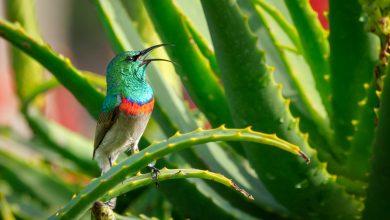The World’s Most Poisonous Plants and Flowers

Have you ever wandered around your backyard and saw a beautiful flower you’ve never seen before? Well, before you go smelling and touching this flower, it’s a good idea to make sure it’s not deadly! There are various flowers around the world that you should never touch or ingest. While these flowers may be nice to look at, they can definitely harm an animal – or even a human. These flowers are vibrant and beautiful, and they can pack a lot of punch – especially if they’re ingested. While there are numerous deadly plants and flowers around the world, these are the top 14 world’s most poisonous plants and flowers.
From Angel’s Trumpet, Bleeding Heart, Monkshood, and Naked Lady, don’t let the looks or the names of these flowers trick you. Make sure you never ingest any of these plants or flowers (unless for medicinal purposes directed by a medical professional). Keep them at arm’s length and as something you can look at – but not touch!
If you, your child, or your pet accidentally ingest any of the following flowers or plants, call the National Poison Control Center immediately so they can give you the next steps on what to do. Do not try to treat the symptoms at home unless directed by a medical professional.

Monkshood
This flower has many different names. It can be called Aconitum, wolf’s-bane, queen of poison, or leopard’s bane. Solely based off of the many dangerous-sounding names it has, it can be assumed how poisonous this flower can be. They thrive in mountainous meadows in the Northern Hemisphere. They’re vibrant and are a gorgeous deep purple, white, or blue color. Don’t be fooled by its beauty! It has large amounts of aconitine, a deadly poison that causes death instantly. You can also suffer from cardiovascular arrhythmia and convulsions if you ingest them. Touching the plant can cause numbness and mild toxicity. These symptoms will appear within several hours of accidental ingestion of the flower. Ironically enough, this flower has been used in Ayurveda and Chinese Medicine to treat fever and cause sedation in small doses.
Angels’ Trumpet
These are one of the most toxic ornamental plants out there. The active toxic ingredient is tropane alkaloid. If you ingest large amounts of Angel’s Trumpet, you can potentially hallucinate, and it eventually proves to be fatal. The leaves and the seeds of this plant are the most dangerous parts. It contains scopolamine, which leads to delirium, paralysis, tremors, and tachycardia. They thrive in frost free climates with no moist and partial shade. They have a pretty bell-shaped flower, but don’t fall for their beauty!
Water Hemlock
Be extra careful if you encounter water hemlock in your backyard! This plant resembles celery and has small green flowers that are shaped like an umbrella. It’s located mainly in North America in wet meadows. They contain cicutoxin, which can cause seizures shortly following ingestion. Other effects include low blood pressure and hyperthermia. Long term effects can be amnesia or even tremors. Timely treatment for poisoning is necessary.
Rosary Pea
The seeds of the Rosary Pea plant are incredibly toxic. You need less than one seed to prove to be fatal. The active poison is abrin, a ribosome-inhibiting protein. The Rosary Pea is often used in prayer beads. If you’re handling the seeds of this plant, you have to be incredibly careful not to accidentally ingest the seed or prick your finger while holding them. It’s found mainly in tropical regions and originated in India and Africa. The seeds are a vibrant red with black spots on one end. Victims will succumb to organ failure within several days with accidental ingestion of the plant.

Tobacco
It’s no surprise that tobacco is deadly! It’s one of the most widely consumed plants in the entire world. It may come as no surprise that tobacco contains nicotine, which is an addictive substance that is poisonous to cardiac health. Unfortunately, tobacco causes many negative health diseases including diseases in the heart, brain, and lungs. Due to its wide availability and consumption around the world, many people succumb to diseases caused by the tobacco plant. Nicotine is the main component in cigarettes, which is why it’s so hard to quit once you start. Because it’s so widely advertised and consumed, it’s ironically one of the deadliest plants out there. Never swallow tobacco, as the nicotine causes tremors, high blood pressure, and sweating.
Nerium Oleander
These beautiful flowers are pale pink and white. They’re gorgeous to look at – even though they’re one of the most poisonous plants in the world. The flower is native to Morocco and the Mediterranean region. This flower is not only hazardous to humans, it’s also hazardous to horses, sheep, and cattle. Effects of Nerium Oleander on humans includes tremors, seizures, comas, and irregular heart rate.
Ricinus
Also known as the Castor Bean Plant, Ricinus is especially poisonous to humans, insects, and animals. It’s most commonly found in tropical regions. Ricin is the active poisonous component in the Castor Bean Plant. If you ingest enough of this plant, you’ll suffer nausea, seizures, hypotension, and tachycardia. Luckily for us, a full recovery from Castor Bean Plant poisoning is more likely than not. Poison is found from ingesting the seeds.
Castor Oil, which is extracted in small doses from this plant, actually has medicinal properties that can be used to protect the liver.

Foxglove
This springtime flower can be purple, yellow, or cream colored. The entire plant is poisonous to humans. Uncontrolled dosages can slow your heart rate and cause an irregular heartbeat. Avoid making your own tea from this plant, as every single part of it has the potential to be deadly.
Bleeding Heart
Another flower that’s beautiful to the eye but harmful once ingested, Bleeding Heart is a convulsant that’s high in alkaloids. It’s especially toxic for dogs, so it’s important to keep an eye out on them if they ingest Bleeding Heart and start to suffer from respiratory distress and seizures.
Lily of the Valley
This familiar flower is highly poisonous. The red berries, flower, and stem are all poisonous, and you must seek immediate help if ingested. The white, bell shaped flowers are beautiful to look at, and their scent is sweet. Symptoms of ingestion include slowed heart rate, vomiting, and pain in the abdomen. You can also suffer a rash and blurred vision. Oddly enough, these flowers are used as decorations in bouquets and celebrations around the world. On a happier note, the Lily of the Valley signifies the return of happiness, hence the reason it’s used in many celebrations.
Naked Lady
Also referred to as Autumn Crocus, the main poisonous component in the Naked Lady plant is lycorine. This can resemble the ill effects of arsenic poisoning. It’s especially poisonous to plants and can cause vomiting, diarrhea, paralysis, and death. It’s a tall, towering flower stalk without any leaves. The bulb has the greatest amounts of toxins, including alkaloids. In humans, it’s assumed to cause kidney failure and death within 72 hours of ingestion.
Yarrow
This plant is both a poison and a medicine. It has healing properties that helps wounds heal by promoting blood clotting. It can also reduce inflammation and swelling. Poisoning can include skin irritation, lethargy, and vomiting. Luckily for your pet, the bitter smell may deter your pet from ever trying Yarrow in the first place.

Oleander
Every part of the Oleander plant is poisonous. Toxins include saponins and cardiac glycosides, both of which will make you very sick and can potentially cause death. Symptoms of ingesting this plant is nausea, stomach pain, low blood pressure, and confusion. These plants can tower to six to twelve feet tall and can be pink, red, or white in color.
Mountain Laurel
Grayanotoxin and arbutin are the active toxins in the Mountain Laurel plant. It has a beautiful white flower with red and yellow markings inside. It’s harmful not only to humans, but to animals too, such as horses, monkeys, and goats. It’s found in forested areas of the eastern part of the United States. Once ingested, symptoms of poisoning will occur within six hours, such as pain, vomiting, abnormal heart rate, and death. The Mountain Laurel can also cause something called the “Mad Honey Disease,” which is when grayanotoxins end up in the honey from bees after they had been pollinating the Mountain Laurel. This can cause blurred vision and hallucinations if consumed.
There are so many beautiful varieties of plants and flowers around the world that it’s no wonder that so many of them can be poisonous! If you spot any of these flowers or plants in your garden or backyard, make sure to prevent accidental ingestion from your children or pets. Even though many of these are beautiful to look at, they can be incredibly harmful once ingested. These plants and flowers contain certain toxins that are harmful to human and animal health if accidentally ingested, and may cause a series of uncomfortable symptoms. Call the National Poison Control Center if you notice or suspect symptoms having to do with accidental ingestion with any of these flowers and plants.
Sources
BT. “Poisonous Plants: 7 of the World’s Most Deadly Flowers” https://home.bt.com/lifestyle/house-home/gardening/poisonous-plants-11363929380548
Live Science. “Naughty by Nature: The Most Disgusting and Deadly Flowers” https://www.livescience.com/33265-most-disgusting-deadly-flowers.html
Pro Flowers. “20 Poisonous Flowers to Watch Out For” https://www.proflowers.com/blog/poisonous-flowers



